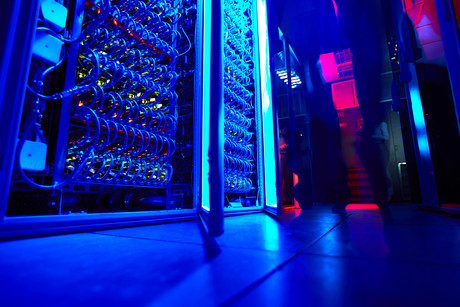Artemis 3 supercomputer furthers AI research

A new supercomputer that increases the speed of volume and data processing has been unveiled by Dell EMC.
The Artemis 3 supercomputer will be an important component of the new UBTECH Sydney Artificial Intelligence Centre and its work to further technology such as drones and self-driving cars. The fully deployed high-performance computing (HPC) system uses Dell EMC PowerEdge C4140 server technology.
Artemis 3 will also support a diverse range of other projects at the University of Sydney, including those in established fields such as geophysics and cosmology, as well as rapidly growing areas of genomics and proteomics. Additionally, it will be used in emerging areas that tackle questions answerable by big data, such as economics, transport logistics and medical imaging.
The University of Sydney’s $2.3 million system has an rPeak performance of one petaflops and an rMax of 700 teraflops, which will allow faster processing of data to provide answers to scientific questions previously beyond reach.
“The university’s research continues to grow in computational intensity,” said Dr Jeremy Hammond, Director, Strategic Ventures, the University of Sydney.
“To stay ahead of the volume and velocity of data being generated by scientific instruments and sensors, researchers need high-performance computing (HPC) technology to collect and process data faster, in real time, or thanks to artificial intelligence (AI) algorithms, with minimal human interaction.”
Much of the role of the supercomputer is supporting the work of the multimillion-dollar UBTECH Sydney Artificial Intelligence Centre, announced last year. Led by Professor Dacheng Tao, the centre is a multidisciplinary effort to solve some of the major challenges in AI and robotics.
“With increased throughput, computational performance and storage capacity, Artemis 3 will be able to capture and process sensor and instrumentation data from across campus and remote research sites, enabling a wave of new research and discovery,” said Andrew Underwood, Dell EMC HPC and AI lead for Asia-Pacific and Japan.
As well as helping find practical solutions to key health and infrastructure problems in Australia, the system ensures the university remains a global research leader. It supports accelerated computing on NVIDIA Tesla graphics processing units (GPUs) for high-performance needs, which is vital for the growing areas of AI and machine learning.
This new supercomputer augments the capabilities of Artemis 2, a previous system also built on Dell EMC PowerEdge. Artemis 2, last upgraded in 2016, lacked the Artemis 3’s dedicated NVIDIA Tesla GPU cores’ computational power and therefore was less suitable for the university’s next level of AI and machine-learning research.
“The addition of advanced deep learning capabilities to our Artemis supercomputer — thanks to the Dell EMC PowerEdge C4140 — is a mission-critical dimension of our research infrastructure,” said Professor Geraint F Lewis, Deputy Director, Sydney Informatics Hub, the University of Sydney.
“With a greater number of research problems being data-driven, or more accessible because there is data, our researchers will be able to investigate questions that were previously unanswerable.”
Please follow us and share on Twitter and Facebook. You can also subscribe for FREE to our weekly newsletter and quarterly magazine.
OpenAI opens Australian office
OpenAI's first Australian office in Sydney will initially support local customers and...
Symbos acquires CPM Australia
CX and digital service provider Symbos has acquired CPM Australia as part of its efforts to...
Kyndryl launches agentic AI services for IBM z/OS
Technology services provider Kyndryl is collaborating with IBM to help enterprises introduce AI...







